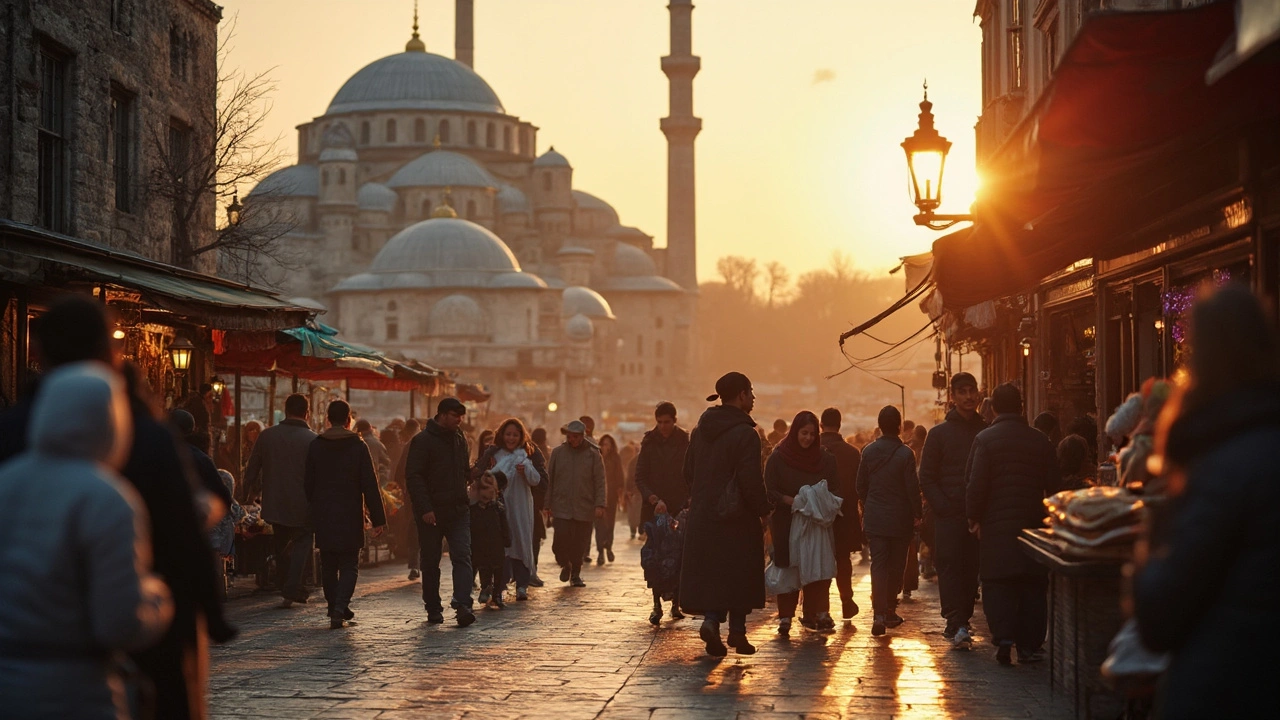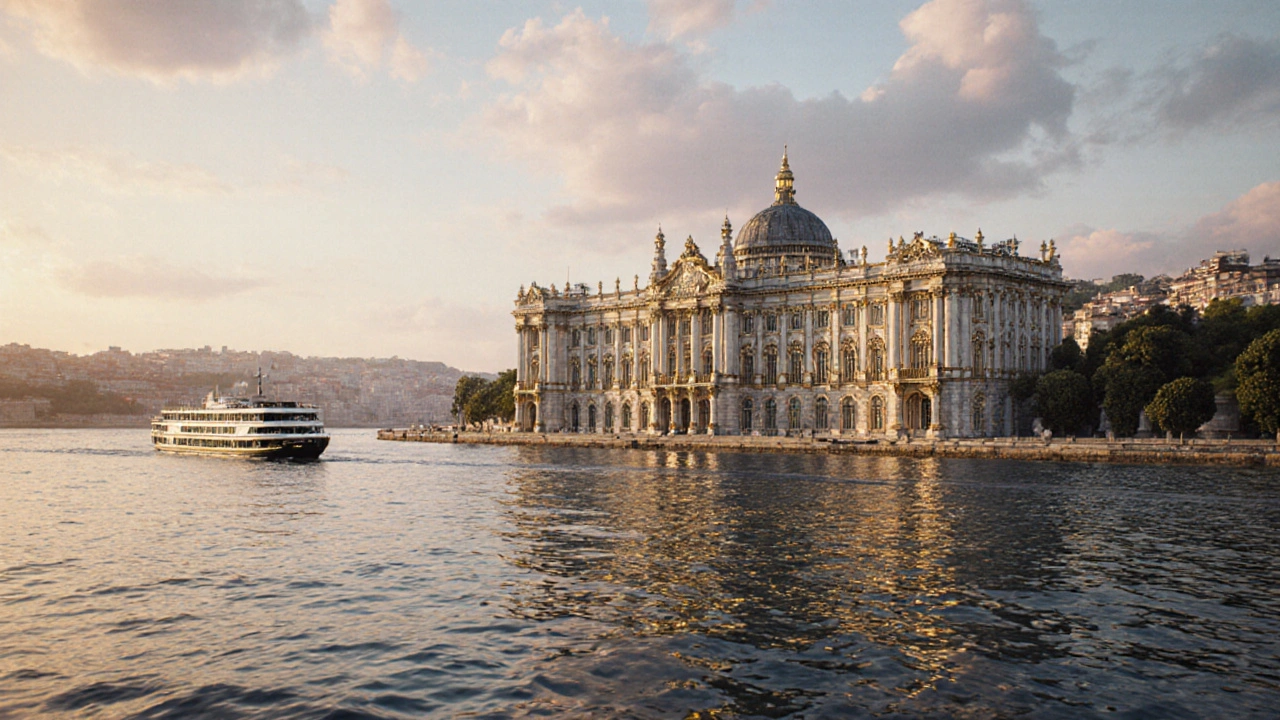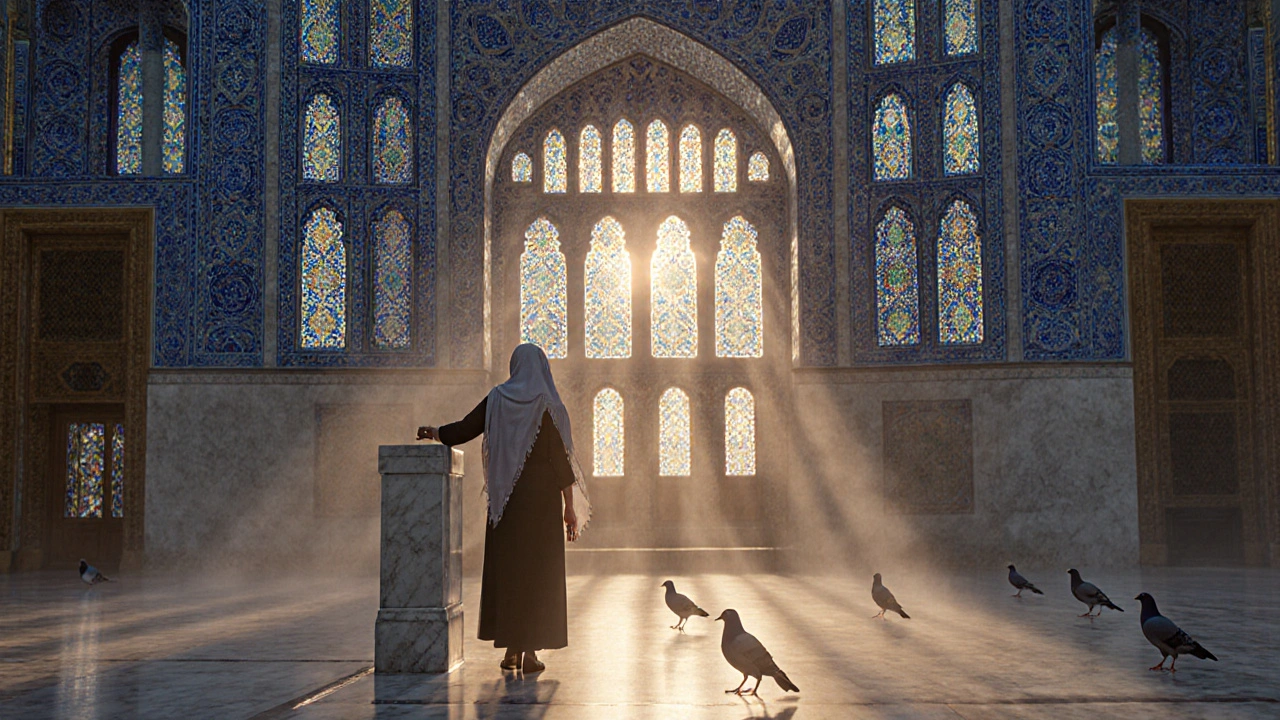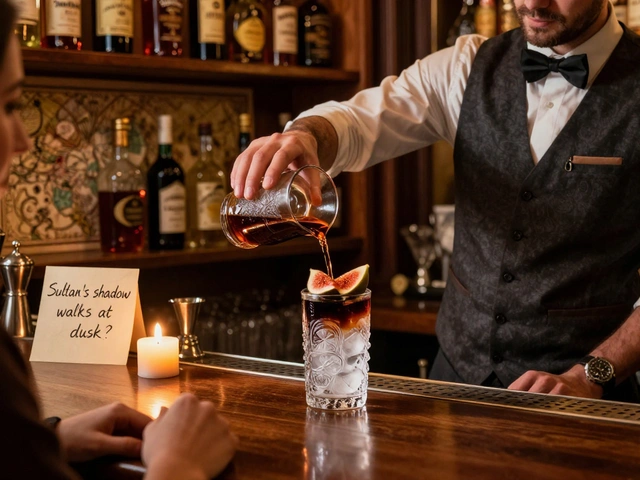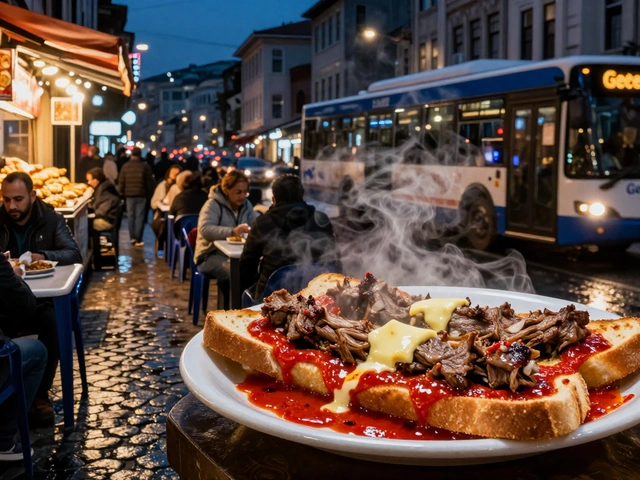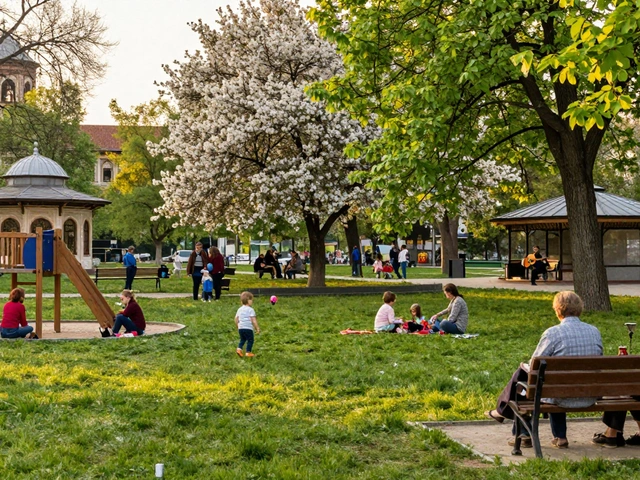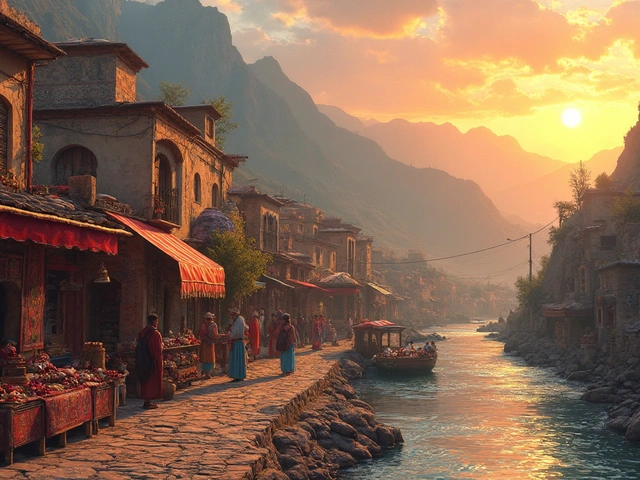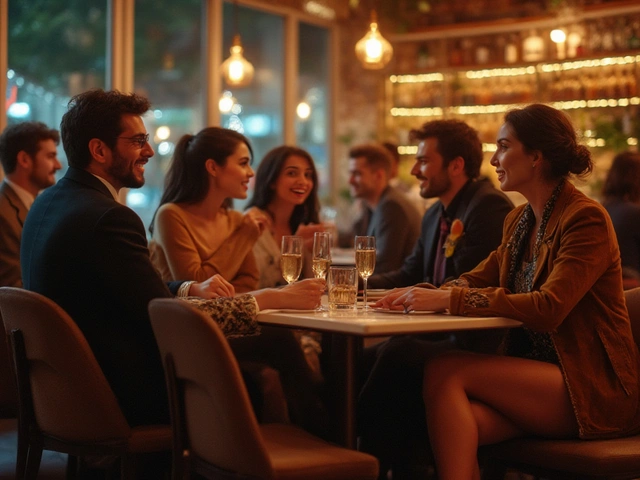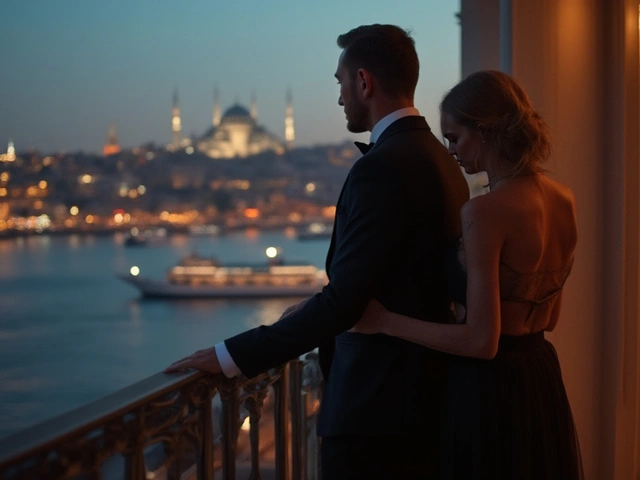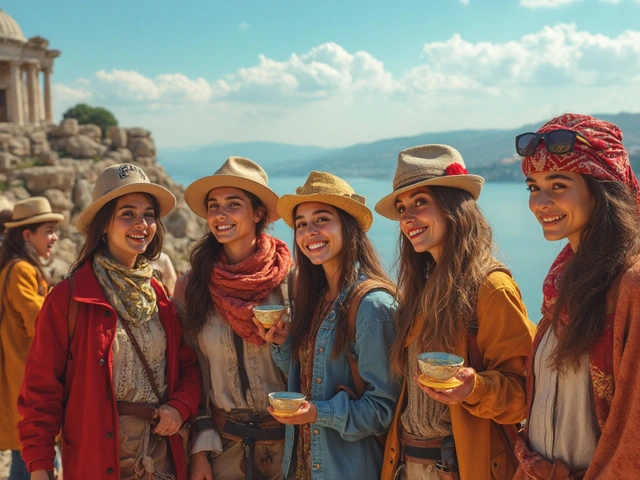If you’ve walked around Sultanahmet Square in Istanbul, you’ve probably caught yourself staring at the Blue Mosque—its domes, minarets, and throngs of people snapping photos or heading to prayer. For anyone living in this city, it’s less of a far-off postcard spot and more like a daily neighbor that shapes everything from traffic patterns to café views.
You don’t need to be a tourist to experience the Blue Mosque’s pull. Maybe your morning commute weaves past its courtyard. Maybe your friends are visiting, and suddenly you’re playing tour guide, figuring out opening hours and the best place for simit just outside the tram stop. This place, officially called Sultan Ahmet Camii, is woven into Istanbul’s daily rhythm, whether you’re a lifelong Istanbullu or a newcomer finding your place in the city.
The mosque isn’t just a photo op—it’s a working mosque, pulsing with the sound of prayers five times a day. If you schedule meetings around Friday prayer times, or time your walks to catch sunset views from the park benches nearby, you already feel the mosque’s influence. Want to actually step inside? There’s a rhythm to it: respectful dress, shoes off, and quiet voices. Locals know you can grab a free scarf and plastic bag right at the entrance if you forget. Don’t worry, you won’t be alone—everybody from chatty families to solo travelers is figuring it out, too.
- Stepping Into Sultanahmet: Where Past Meets Present
- Inside the Blue Mosque: What Makes It Special
- Traditions, Prayers, and Living Neighborhoods
- Navigating Your Visit: Practical Tips for Locals and Visitors
- Beyond the Mosque: Food, Markets, and Local Life
Stepping Into Sultanahmet: Where Past Meets Present
When you set foot in Sultanahmet, you step into Istanbul’s time capsule. The heart of Istanbul’s Old City may be packed with visitors snapping photos, but it’s also where families eat breakfast every Sunday, guides lead school trips, and shop owners greet locals by name. Just walk out of the Sultanahmet tram station and everything is right there: the Blue Mosque on your left, Hagia Sophia on your right, and the maze of park benches, street vendors, and tour groups in between.
This spot has been the center of action for centuries. The area got its name from Sultan Ahmed I, who kicked off the construction of the mosque in 1609. Back in Ottoman times, this was where everything happened—royal processions, local festivals, even the famous camel wrestling competitions (okay, not anymore, but the energy is still there!). Today, Sultanahmet remains a hub where locals mingle with people from all over the world every single day.
Here’s a quick look at why Sultanahmet pulls in crowds year-round:
- Easy transport: Tram line T1 drops you right in front of the mosque. No need to stress about finding a taxi.
- Café central: From old-school pide shops like Hocapaşa Pidecisi to tourist staples such as Tarihi Sultanahmet Köftecisi, there’s no shortage of food nearby.
- Events: Ramadan evenings, Tulip Festival in April, and open-air concerts in the square change up the vibe month by month.
- Local life: Don’t be surprised to see groups from Fatih and Kadıköy gathering for photo shoots or kids on school science outings.
Check out these quick numbers on who passes through on a typical peak day:
| Visitor Type | Average Daily Count (Summer) |
|---|---|
| Local Residents | 6,000 |
| Tourists | 12,000 |
| School Groups | 800 |
| Prayers Attendees | 4,500 |
Lots of locals dodge the busiest weekends, but weekday mornings are ideal for a quieter stroll. Bring your Istanbulkart—public transit is king here—and don’t forget, many places in Sultanahmet only accept cash, especially the smaller tea gardens and simit carts. If you’re meeting a friend, pick the park between Hagia Sophia and the mosque. Locals call it the city’s best meeting spot. You can’t really get lost: almost everything points back to the Blue Mosque and the historic square that launched so many Istanbul stories.
Inside the Blue Mosque: What Makes It Special
Stepping through the courtyard into the Blue Mosque, you’ll see why it gets so much buzz. Right away, the blue Iznik tiles covering the walls jump out—not flashy, but hundreds of detailed patterns and shades. These tiles aren’t random décor. When the mosque was finished in 1616, tiles were the latest trend, and Istanbul’s tile workshops competed to make each new piece even more impressive.
If you look up, those huge chandeliers hanging down are hard to miss. They keep the place feeling close and warm, even if you’re standing in a space built for thousands. And the writing on the walls? That’s Arabic calligraphy, quoting the Quran and sometimes listing the names of the early sultans. It’s all hand-painted, and local specialists touch it up every decade or so.
Another detail: The Blue Mosque is the only mosque in Istanbul (and Turkey) with six minarets. This was a bold move, since back when it was built, only the Grand Mosque in Mecca had six. One local guide I spoke with explained:
“The architect had to actually send a team to Mecca to build a seventh minaret there, so people wouldn’t think the sultan was trying to outdo the holy city. That’s the kind of competition they had back then.”
You might wonder about all the tourists walking around while people pray. The mosque is set up for both. There’s a main prayer area, and then a separate space for visitors who just want to look around. During big moments—like Friday prayer or Bayram mornings—the crowd is mostly worshippers, but the rest of the week, it’s a mix of curious visitors and locals taking a break from nearby shops.
Curious how the Blue Mosque stacks up size-wise or in tile count? Check out these basics:
| Feature | Details |
|---|---|
| Year Completed | 1616 |
| Number of Domes | 1 main dome, 8 secondary |
| Number of Minarets | 6 |
| Iznik Tiles Used | Over 21,000 |
| Capacity | About 10,000 people |
If you’re visiting, make sure your phone’s on silent and don’t try to get that perfect selfie during prayer times. Respect goes a long way here, and it’s what keeps the Blue Mosque open to everyone in Istanbul—worshippers and guests alike.
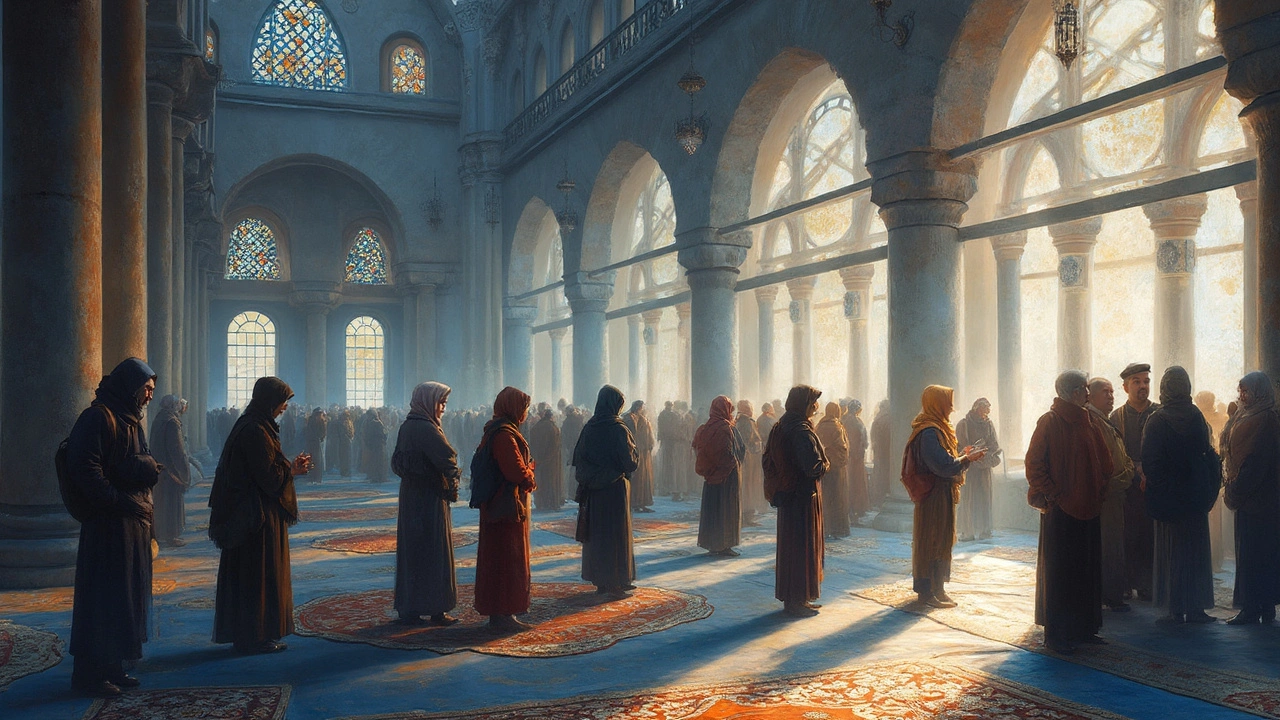
Traditions, Prayers, and Living Neighborhoods
The Blue Mosque isn’t just a famous spot—it’s an active part of daily life. You’ll see locals walking in for prayer right alongside visitors holding their phones. Most people know this mosque as Sultan Ahmet Camii, and it’s still the heartbeat of Sultanahmet for residents, especially during big events like Ramadan or Friday prayers. You’ll hear the ezan (call to prayer) echo every day, reminding the entire neighborhood that it’s time to pause—something you’ll notice all around Istanbul.
Prayer times here follow tradition, changing slightly every day according to the sun. There are five daily prayers—locals plan meals, work breaks, and even errands around these times. During special holidays, like Eid (Kurban Bayramı and Ramazan Bayramı), the crowd spills into the square, and you see a rush at local bakeries like Hafız Mustafa as everyone grabs sweet treats to share after prayer.
The mosque’s presence shapes the local area in practical ways, too. Streets close before Friday midday prayer to make room for worshippers, and you’ll see men washing before entering—the ablution fountains are a common meeting point. Living here means you end up knowing the routines: which streets to avoid during prayer rush, which tea gardens empty out (or fill up) as soon as the ezan finishes, and where to buy fresh pide after fasting in Ramadan.
| Prayer Time | Local Behavior | Neighborhood Changes |
|---|---|---|
| Morning (Fecr) | Bakeries open early, some folks visit on their way to work | Tram quieter, mosques open doors before sunrise |
| Noon (Öğle) | Shops and markets pause business | Sultanahmet Square gets busy |
| Afternoon (İkindi) | Families and groups often visit together | Streets fill with school kids and locals |
| Sunset (Akşam) | Time for breaking fast in Ramadan | Vendors sell simit, tea, and sweet corn |
| Night (Yatsı) | Neighborhood quiets down after prayer | Cafés wind down, park lights stay on |
The area is a mix of old tradition and modern city life. You’ll find third-wave coffee shops next to antique rug sellers, and families catching up over çay while backpackers look at their maps. If you want a taste of what it’s like to live near the Blue Mosque, walk around just before sunset—see the lines outside Sultanahmet Köftecisi and notice how strangers chat at the fountains while waiting for prayer to finish.
For Istanbullus, the mosque isn’t just historic—it’s part of the neighborhood’s daily rhythm, blending faith, food, and friendship in ways you’ll recognize as soon as you become part of the crowd.
Navigating Your Visit: Practical Tips for Locals and Visitors
Timing is everything. If you're hoping for some peace and quiet, skip the main tourist rush between 10 a.m. and 2 p.m. Mornings, right after opening, or later in the afternoon work best for a shorter wait and more time to soak things in. Fridays get busy around midday—keep in mind that the mosque is packed with worshippers for Cuma Namazı (Friday prayers). The best days for a smooth visit are usually Tuesday or Wednesday, when both locals and tour groups thin out.
Don’t forget, the Blue Mosque is a place of worship for Istanbul locals. During prayer times, tourists have to wait outside. Prayers happen five times a day, but for non-Muslim visitors, the key times to avoid are about 30 minutes before to 30 minutes after each prayer, especially noon and sunset. There's a daily schedule posted at the main entrance, but here's a quick guide based on average local prayer times:
| Prayer | Typical Time |
|---|---|
| Sabah (Fajr) | 05:00 |
| Öğle (Dhuhr) | 13:00 |
| İkindi (Asr) | 16:30 |
| Akşam (Maghrib) | 20:15 |
| Yatsı (Isha) | 21:45 |
Your clothes matter. Women should cover their hair, shoulders, and legs, while men should avoid shorts. If you forget, attendants at the entrance have wraps and scarves—no judgment, just ask. And remember, everyone needs to remove their shoes. You’ll get a plastic bag to carry them around, but some locals bring their own drawstring sacks if they don’t want to use the ones provided.
Want to make the most of your visit? Try these tips:
- Leave large bags at your hotel or locker—security is strict, and there’s no storage.
- Photos are fine, but skip the flash and respect prayer areas. Locals appreciate it when visitors stay mindful around worshippers.
- If you’re with little ones, bring snacks, but avoid eating inside the mosque. There are great snack vendors right outside once you’re done.
- The main courtyard is almost always open, so if the mosque interior is closed for prayer or cleaning, you can still walk around and take photos.
- Entry is free, but donations help with upkeep. There are clearly marked boxes near the door for this.
Blue Mosque visits dip at lunchtime, so nearby spots like Tarihi Sultanahmet Köftecisi or the corner simitci (bagel vendor) are less crowded right after noon prayer. If you're a local, try timing errands to avoid the tourist surge and catch quiet moments on the benches facing the mosque. Need a cash machine? There’s a Garanti BBVA ATM beside the Arasta Bazaar entrance, just behind the mosque.
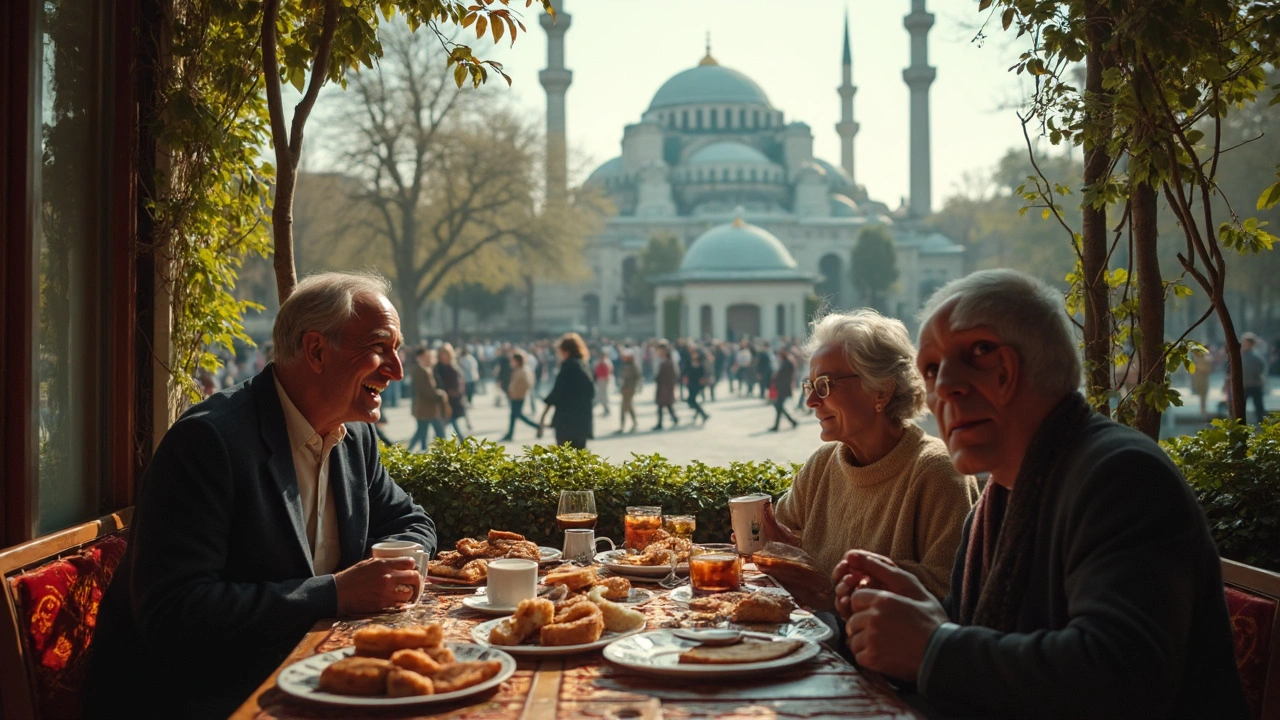
Beyond the Mosque: Food, Markets, and Local Life
Once you’ve stepped out from under the domes of the Blue Mosque, you’re right in the thick of Istanbul’s daily life. The Sultanahmet area isn’t just for sightseeing. It’s where people grab breakfast before work, street vendors call out deals on roasted chestnuts, and shopkeepers set up displays early in the morning.
Hungry? There’s no shortage of spots to try. For a quick bite, grab a balik ekmek (fish sandwich) by the Eminönü waterfront. Locals swear by the stuffed mussels—midye dolma—from street carts lining Kennedy Avenue. And if you’re craving a sit-down meal, places like Tarihi Sultanahmet Köftecisi have been serving up juicy meatballs since the 1920s. These institutions feel almost as iconic as the mosque itself.
- Tarihi Sultanahmet Köftecisi: Famous for Turkish meatballs (köfte), just a three-minute walk from the mosque.
- Seven Hills Restaurant: Rooftop spot with unbeatable views of both the Hagia Sophia and Blue Mosque.
- Pudding Shop Lale Restaurant: Legendary meeting point for travelers since the hippie trail days.
If shopping is your thing, the Grand Bazaar is a fifteen-minute walk up the hill. But locals know that Arasta Bazaar, tucked right behind the mosque, is less chaotic—perfect for picking up handmade ceramics or Turkish delight without a headache. The shopkeepers here are used to haggling, so feel free to ask for a deal, but keep it friendly.
Sundays bring a different vibe when families fill the parks around Sultanahmet Square. Children play while neighbors stretch out in the grass, sharing tea from glass cups—yes, real glass, not paper. Istanbul’s many public gardens—like Gülhane Park, just ten minutes away—offer the best people-watching in the city. You never know if you’ll bump into a film crew shooting a drama or spot a neighborhood festival in full swing.
| Spot | Type | Distance from Blue Mosque |
|---|---|---|
| Arasta Bazaar | Shopping | 2 min walk |
| Tarihi Sultanahmet Köftecisi | Dining | 3 min walk |
| Gülhane Park | Park/Garden | 10 min walk |
| Grand Bazaar | Shopping | 15 min walk |
If you’re looking for something truly local, check out Istanbul Tulip Festival in April at Sultanahmet Square, or catch the Ramazan street iftar events, when the whole area lights up after sunset with food stalls and music. These experiences make it clear: life around the Blue Mosque is anything but static. It’s a mix of old and new, sacred and casual, with something for anyone who wants to get closer to the real pulse of Istanbul.
